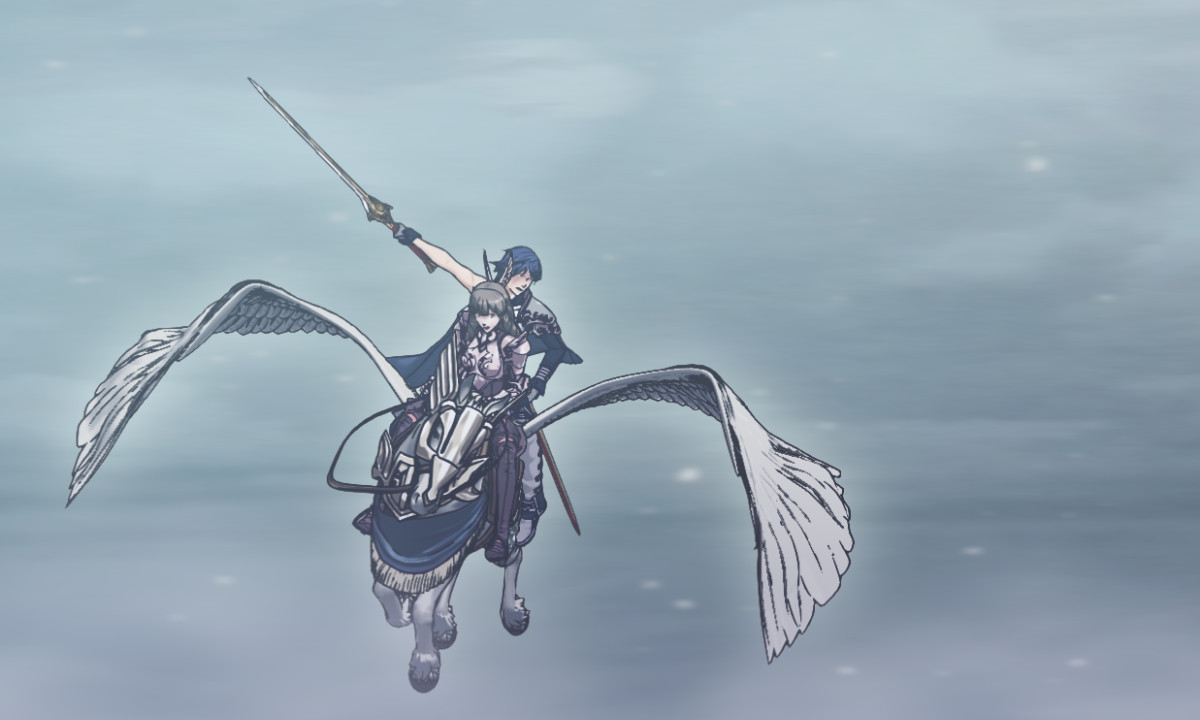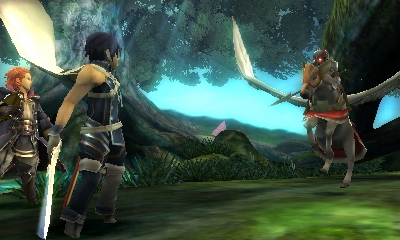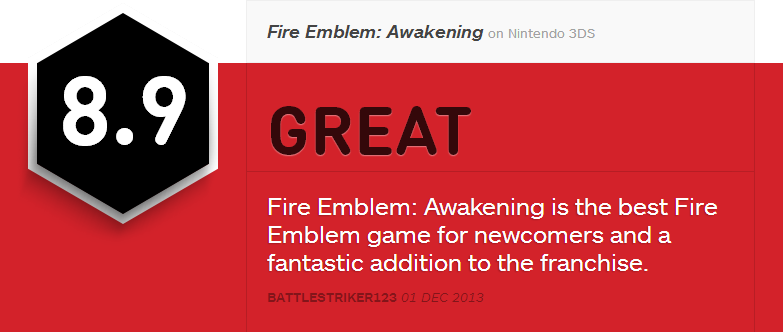The rebirth of a franchise.
A quick preface – I have never played a Fire Emblem game up until Awakening. As a perfectionist and pseudo-OCD gamer, I could not stand the mere idea of permanently losing characters due to player-induced death. Not being able to complete my game with all my units in my party would no doubt pain me to no end and the possibility of losing my most powerful warrior in battle would surely tear my heart to shreds. No, these things would most definitely dampen my enjoyment of the title, and thus I have never even attempted to try a Fire Emblem game, bar the free GBA title for 3DS ambassadors, of which I gave up after the first few chapters for these same reasons.

Animated cut-scenes add a boost of presentational flare.
Fire Emblem: Awakening introduces to the franchise a new mode called “casual mode,” the sole reason why I decided to give the game a go. In this new mode, character deaths are impermanent; if a soldier dies on the battlefield, he or she will return to full health in the next battle. Interestingly, this mechanic also changes the way even veterans of Fire Emblem will play the game; the lack of permanent death pushes the player to take more risks, and thus losing a character for the rest of the game is no longer a commitment when it comes to issuing suicide missions.
Of course, I you so desire, you can still play Fire Emblem: Awakening the classic way in “normal mode,” where permanent death becomes a factor in every turn. This mode requires more tact that casual mode, because weighing the pros and cons of each move now carries more weight. Not only do players have to pay attention to their offensive moves, but they must also be able to predict the possible motives of the enemy. Think of it as a very elaborate game of chess; players must find a way to eliminate the opposition without running the risk of being eliminated themselves.
For those unfamiliar with the Fire Emblem franchise, Awakening is, like its predecessors, a turn-based strategy role-playing game. Players take turns with the opponent moving their troops around a gridded map in an effort to wipe each other off the board. Attacking occurs when a player unit moves near an opponent unit and a simulated battle ensues, with each side incurring or receiving damage until the turn is over. When a character runs out of health, he or she exits the board, and the process repeats until the victory condition triggers.

The battlefield is where most of the strategy takes place.
Strategizing each move requires knowledge of weapon and specialization strengths and weaknesses. There are a number of different weapons found in Awakening, each strong or weak against another. For example, a unit carrying a sword can easily defeat a unit carrying an axe, but a unit equipped with a lance can swiftly defeat the unit carrying the sword. Furthermore, the class of each unit can alter the amount of damage dealt or received, so an archer for example equipped with a bow can easily shoot down even the most powerful a Pegasus knight. This system may sound complex – and in truth, it quite is – but the game does an adequate job in telling you which unit is most effective against who before every turn in battle. This way, players know exactly what the consequences are for making the wrong choices even before the move actually occurs.
It is possible to upgrade classes or even change classes when need be. All basic units are upgradable when they are at level ten or above, giving them additional skills or abilities if the player uses an item called the “Master Seal.” Players can also change the class of a character using a “Second Seal,” which is particularly useful is they want to equip a character with an item or weapon that was otherwise incompatible with the character’s previous class. New items and weapons are obtainable through item drops or chests in the battlefield, or players can purchase them in shops on the world map.

Cinematic battle sequences are visually appealing.
In terms of plot, Fire Emblem: Awakening’s story is not the most gripping tale ever told, but it does a good job in setting up the overall scenario. The game follows the journey of Prince Chrom and his band of “Shepherds” (among them is you, the player character) as they trek from kingdom to kingdom in an attempt to accomplish world peace. It has many of the same RPG tropes you have come expect from the genre, but what sets Awakening apart is the way the characters interact with each other. Each character has a distinct personality, and putting two characters side-by-side in battle allows for support moves that temporarily increase the stats of each character for the duration of the turn. If two characters battle alongside each other for long enough, their support rank will increase. Get a high enough support rank and the two characters will get married, initiating some amusing dialogue sequences that will make you both chuckle and cringe at their cheesiness. Marriage also has another unexpected benefit; Fire Emblem: Awakening allows characters to have children and, even better, allows players to play as those children!
Though the characters themselves might be quite charming, Fire Emblem: Awakening’s main storyline begins to stall about two-thirds of the way into the game. Even its gameplay, with all its complexities and details, stops feeling novel and begins to feel more like a grind. I found myself skipping battle sequences just so I could finish a mission faster, something I would never do in the first dozen-or-so chapters of the game. The battlefields do change somewhat depending on its location, but it never really altered the way I would usually play the game. The story itself never escalated to the level I expected either, but even so, I enjoyed the overarching campaign as a whole.

The charming dialogue is a treat to read.
Overall, it took me about 25 hours to complete the main storyline plus about a third of the side quests. For a 3DS game, 25 hours is quite lengthy, especially considering I still have much more content to go through. The game also utilizes SpotPass for those who want to challenge random opponents sent by Nintendo. Players can also battle the armies of other 3DS owners through StreetPass or wireless play. For those who want to challenge their wits and tactics to the maximum, Fire Emblem: Awakening has two additional difficulty modes, both of which ups the ante on the battlefield but gives characters additional abilities and stats. Long story short: that is a game with a lot of content, and easily over a hundred hours of it for those willing.
Fire Emblem: Awakening is one of the best games the 3DS has to offer. Though it does not quite reach the heights as one might expect, Awakening is still an excellent addition to the Fire Emblem franchise and a great fit on the 3DS. Fans of the strategy role-playing genre will find much enjoyment in this title, while newcomers to the series will find it to be both accessible and challenging. Sure, the game is not perfect, but what is there is damn fine if you ask me. Fire Emblem: Awakening is an amazing game.

![Amazing Spider-Man Finale Features New [SPOILER] Costume](../../../../../../assets1.ignimgs.com/2018/06/01/untitled-br-1527892808294_small.jpg)